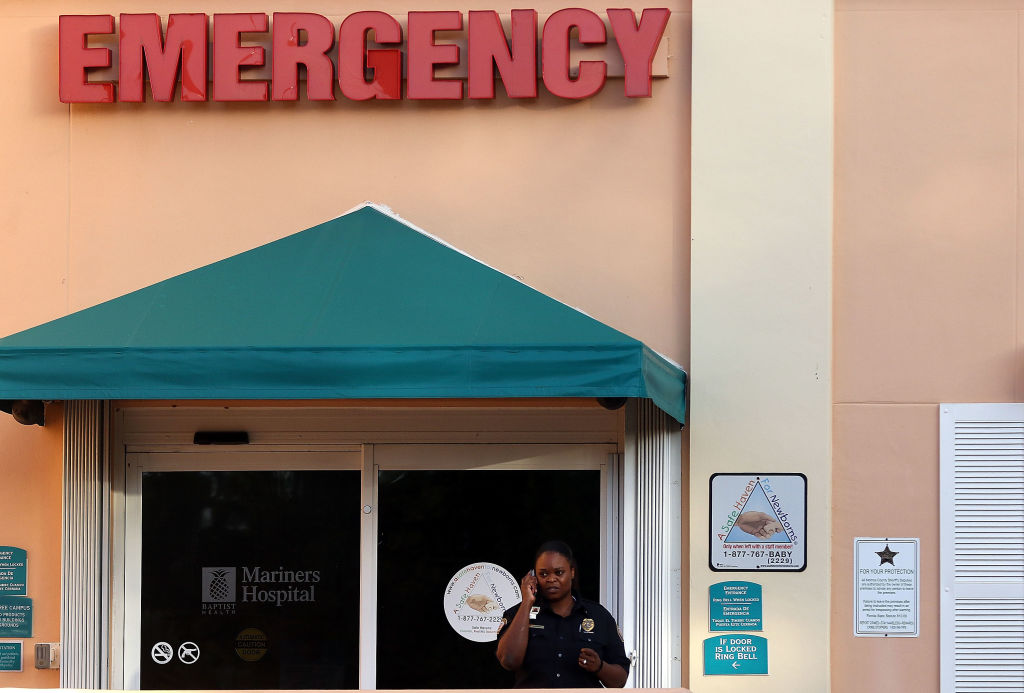(Marc Serota/Getty Images).
Two of every five Missouri adults owe money to medical providers, according to a survey published Tuesday by the nonprofit Missouri Foundation for Health.
Those debts include unpaid fees for services ranging from lab tests and doctors’ visits to emergency treatment and dental care. Often, the bills are from one-time or short-term medical expenses, the report states.
One in ten Missouri residents have more than $5,000 in medical debt.
The result is that Missourians with medical debt commonly cut back on spending for basic needs, exhaust their savings and increase other forms of debt, like credit card debt.
“When people struggle to access affordable health care, the effects ripple through our economy,” said Sheldon Weisgrau, foundation vice president of Health Policy and Advocacy, in a press release.
“It’s not just about health; it’s about financial stability, workforce productivity, and the ability of families to thrive,” he added.
The foundation commissioned a statewide survey of over 2,000 adults last spring, conducted by the research firm SSRS. Data were weighted to be representative of the population.
The survey found Hispanic and Black Missourians are more likely to have medical debt compared to white adults.
Those in rural areas are also more likely to have current or recent medical debt, as are those with disabilities.
Half of Missouri adults have held medical debt at some point in the last five years, according to the report. Most of them — 78% of those under age 65 — had health insurance at the time they received the care that sent them into debt.
One reason those with coverage are incurring debt, the report notes, is that many have unaffordable deductibles — meaning out-of-pocket costs they must pay before the insurance company starts to pay. Cost-sharing measures, like copays, can also be high.
GET THE MORNING HEADLINES DELIVERED TO YOUR INBOX
In 2023, the average family deductible in Missouri was $3,783, according to the nonprofit KFF. The average deductible for single coverage in Missouri was $2,340.
Yet many Missourians live paycheck to paycheck.
Four in ten Missourians don’t have the money to pay for an unexpected $500 bill, the Missouri Foundation for Health survey found.
“The burden of medical debt is not only financially devastating but also demoralizing for families,” said Samantha Schrage Bunk, MFH health policy strategist, in the press release.
The results in the survey were similar to the national average found in a 2022 survey conducted by the nonprofit KFF.
The states with the worst rates of medical debt haven’t expanded Medicaid, KFF has found. Missouri implemented Medicaid expansion in October 2021.
There has been increasing attention to medical debt at the state and federal level in the last few years. At least 17 states this year proposed legislation related to consumer relief for medical debt, though not Missouri, according to LexisNexis’ state legislative tracker.
The Missourians surveyed widely support policies that would require greater price transparency, limits for hospital charges and uniform criteria for financial assistance programs.
“Missourians are clear – they want policy changes that make health care affordable and accessible, and they’re looking for government and health care systems to listen to them and take action today,” Schrage Bunk said.
In an earlier report, published in March, Missouri Foundation for Health interviewed focus groups.
“[Medical debt is] something that I will have to pay for the rest of my life,” one low-income woman, who has between $1,000 and $2,500 in debt is quoted as saying.
Others quoted needed to declare bankruptcy due to medical debt, or took hits to their credit that hurt their ability to find housing and employment.
One rural farmer needed to take on odd jobs in town to try to pay off thousands in debt. A man with disabilities needed to pay hundreds each month for years, instead of saving for retirement. A young mother needed to cut back on spending for food and clothes for her kids to pay hospital bills.
Another described the “vicious cycle” of taking out credit card debt to try to pay off medical debt.
“Honestly, if you’re middle class or low class,” one interviewee asked, “how can you afford $2,000 a ride in an ambulance?”
SUPPORT NEWS YOU TRUST.

